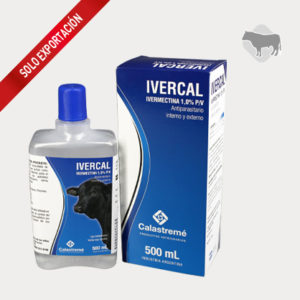ACTION
Powerful sedative, muscle relaxant and non-narcotic analgesic. Sedative and analgesic activity is associated with central nervous system depression. The muscle relaxant effect is based on the inhibition of the intraneural transmission of impulses in the central nervous system; the main effects develop within 10 to 15 minutes after intramuscular injection and within 3 to 5 minutes after intravenous injection.
A state similar to sleep, the depth of which depends on the dose, is maintained for 1 to 2 hours, while analgesia lasts 15 to 30 minutes, post-application.
After intramuscular injection the drug is rapidly absorbed, but the bioavailability varies according to the species: in the horse it is 40 to 48%;in sheep between 17 and 73% and in dogs between 52 and 90%.
INDICATIONS
Short-term minor surgical procedures, such as suturing lacerations or debridements. As a pre-anesthetic agent, thus reducing the necessary dose of anesthetic agents. Orthopedic procedures, semiological examination in the mouth, ears, abdominal, rectal, or vaginal palpation. Catheterization and X-rays. Odontology. Used in conjunction with local anesthetics.
CONTRAINDICATIONS AND WARNINGS
Do not administer to animals receiving epinephrine or having ventricular arrhythmias.
Use with caution in animals with pre-existing cardiac dysfunction, hypotension, or shock. respiratory dysfunction, severe kidney or liver failure.
Do not administer in very weak animals.
Do not administer in dehydrated ruminants or with urinary tract obstruction.
It can cause premature labor, do not use in the last trimester of pregnancy.
Animals must be handled carefully after administration, a false sense of security can lead to an accident as animals can react defensively.
COLLATERAL DAMAGE
In canines, bradycardia, heart block, and acute arterial hypotension may occur, as well as apparent bloat due to aerophagia.
Because it induces a marked degree of salivation in ruminants, it is recommended to pre-medicate with Atropine.
DOSAGE
Injectable subcutaneously (SC); intramuscular (IM); or intravenous (EV). The specific doses will depend on the conditions of use and application of the same.
Horses: Endovenous (EV) 0.5 to 1.1 mg / kg equivalent to 0.5 to 1.1 ml per 100 kg of body weight; intramuscular (IM) 1 to 2 mg / kg equivalent to 1 to 2 ml per 100 kg of body weight.
Cattle: Endovenous (EV) 0.03 to 0.1 mg / kg equivalent to 0.03 to 1 ml per 100 kg of weight; intramuscular (IM) 0.1 to 0.2 mg / kg equivalent to 0.1 to 0.2 ml per 100 kg of body weight.
Sheep: Endovenous (EV) 0.5 to 1.1 mg / kg equivalent to 0.005 to 0.01 ml per 10 kg of weight;intramuscular (IM) 0.1 to 0.3 mg / kg equivalent to 0.01 to 0.03 ml per 10 kg of body weight.
Goat:Endovenous (EV) 0.01 to 0.5 mg / kg equivalent to 0.001 to 0.05 ml per 10 kg of weight; intramuscular (IM) 0.05 to 0.5 mg / kg equivalent to 0.005 to 0.05 ml per 10 kg of body weight.
Pig: Intramuscular (IM) 2 to 3 mg / kg equivalent to 0.2 to 0.3 ml per 10 kg of weight.
Dog: Endovenous (EV) 0.5 to 1 mg / kg equivalent to 0.05 to 0.1 ml per 10 kg of body weight; intramuscular (IM) 1 to 2 mg / kg equivalent to 0.1 to 0.2 ml per 10 kg of body weight.
Cat: Endovenous (EV) 0.5 to 1 mg / kg equivalent to 0.025 to 0.05 ml every 5 kg of body weight; intramuscular (IM) 1 to 2 mg / kg equivalent to 0.05 to 0.1 ml per 5 kg of body weight.
Poultry: Intramuscular (IM) 5 to 10 mg / kg equivalent to 0.05 to 0.1 ml per 1 kg of weight.








Reviews
There are no reviews yet.